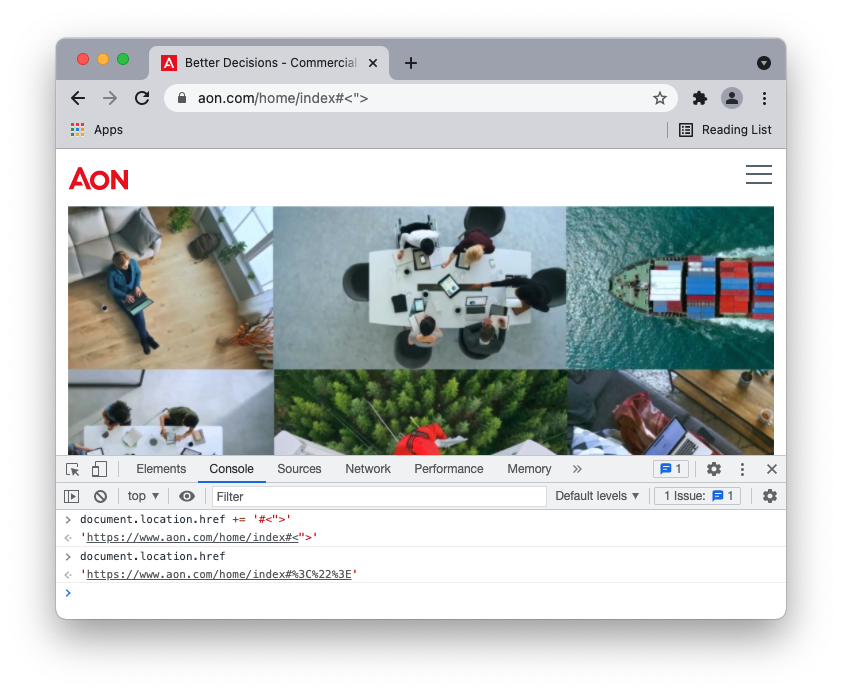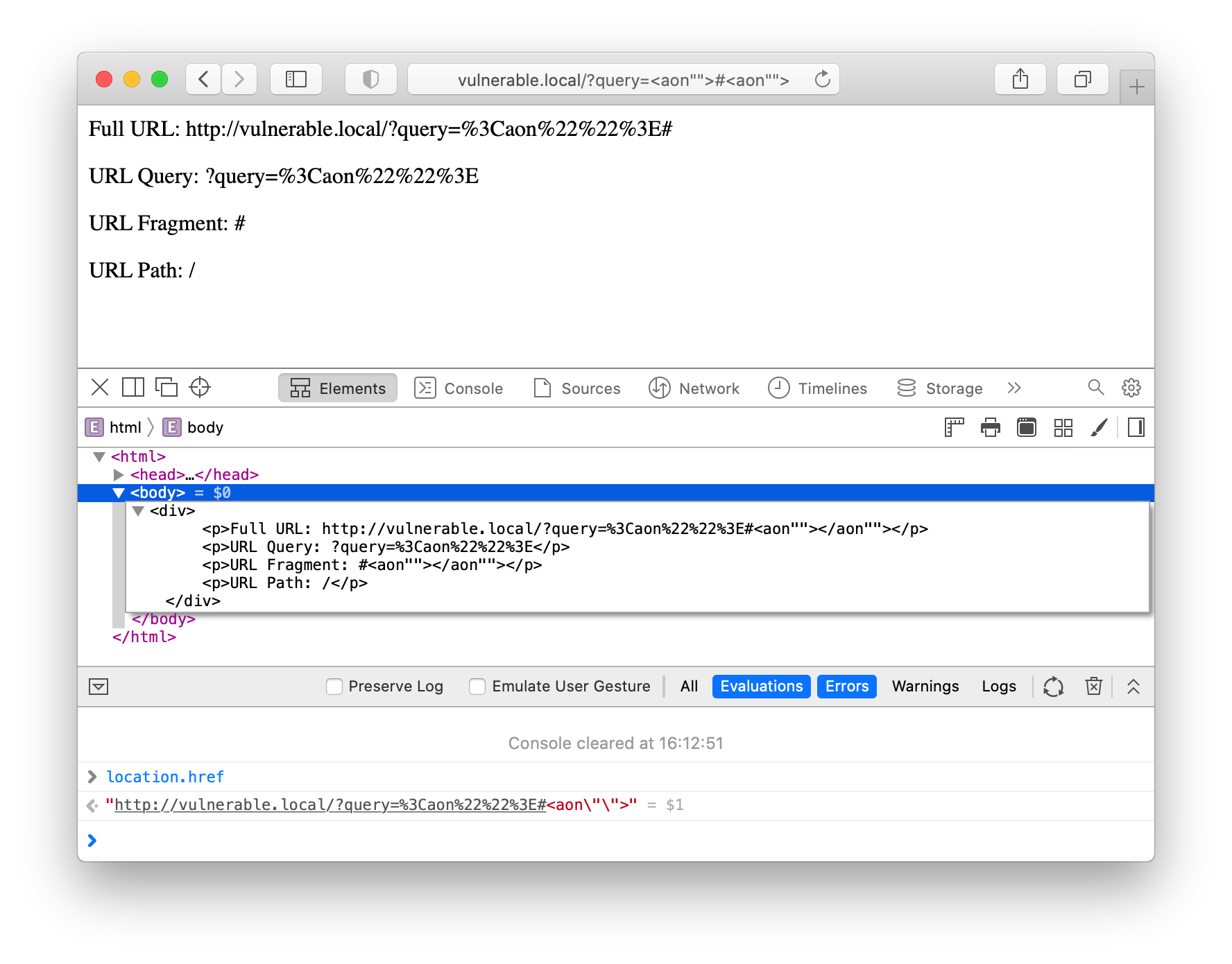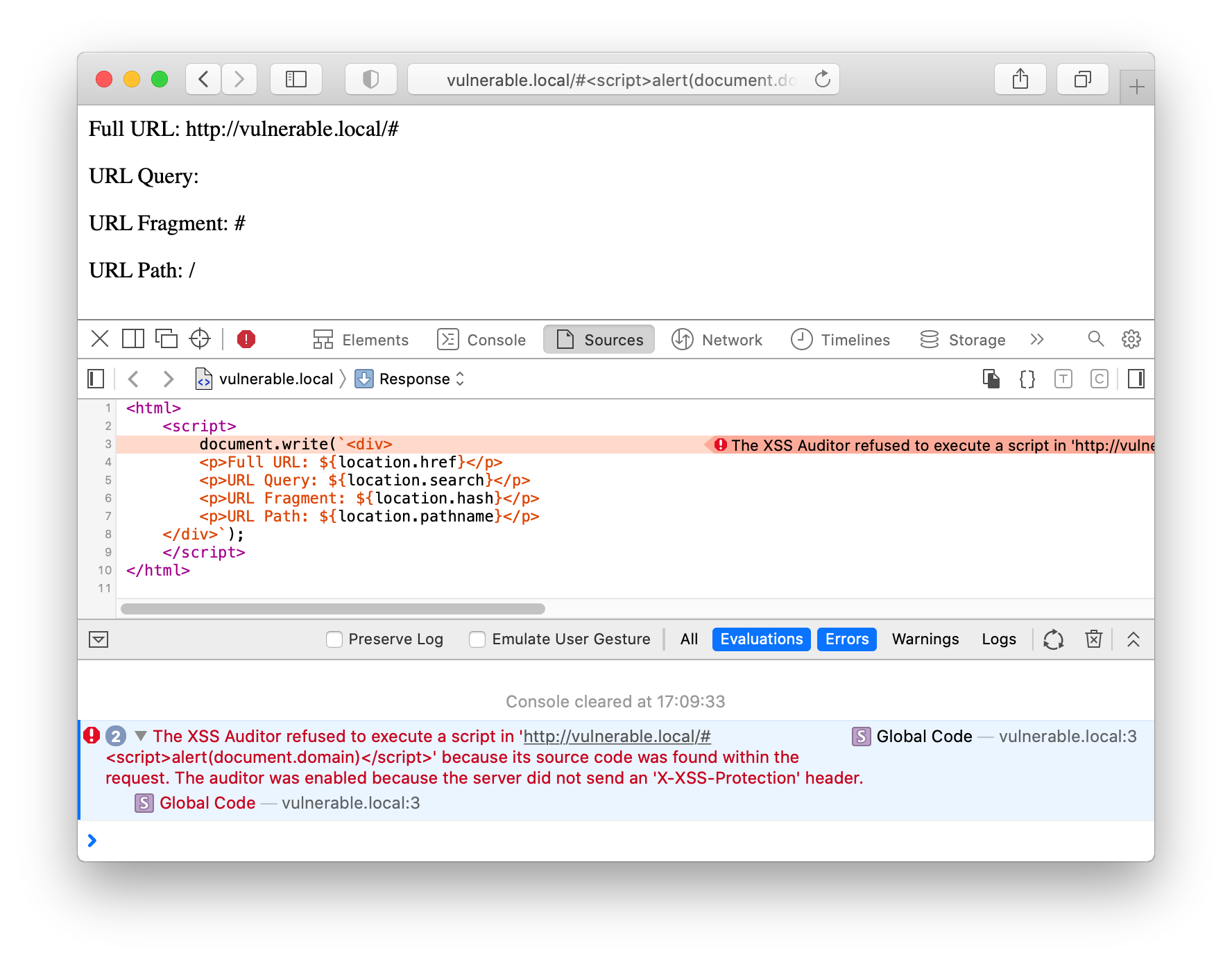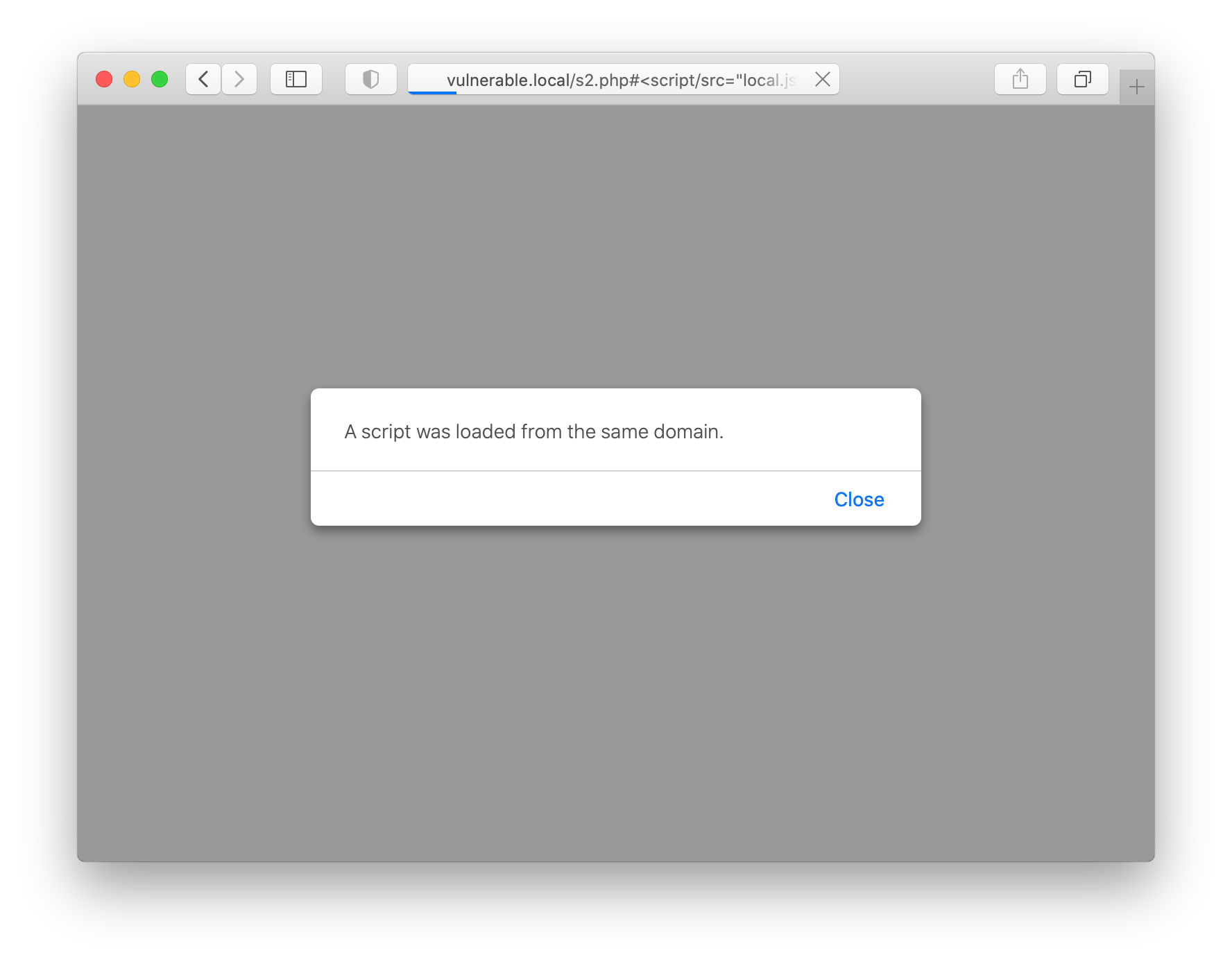
Support

In August 2020, Aon discovered and reported to Apple an issue relating to the encoding of Uniform Resource Locator (URL) characters in the Safari web browser, making it easier for an attacker to perform Cross-Site Scripting (XSS) attacks. Following further investigation, this vulnerability appeared to be a wider WebKit issue, and was found to be present in macOS, iOS, iPadOS, the GNOME Web browser, and other WebKit-based applications. The vulnerability was discovered by Alex Camboe and assigned CVE-2021-1825. As of April 2021, the vulnerability was patched with the releases of macOS 11.3, Safari 14.1, iOS 14.5, tvOS 14.5, watchOS 7.4, iTunes 12.11.3, iCloud for Windows 12.3, and as of July 2021 with the releases of WPE WebKit 2.30.0 and WebKitGTK 2.30.0. We would like to thank Apple for working with us as part of our coordinated disclosure process.
This post will give an overview of the issue and detail possible attack scenarios where this vulnerability can be exploited by an attacker. We consider this issue to be of overall low severity as the encoding of URL entities is a side-effect of the browser ensuring that URLs are standards-compliant and is not and should not be treated as a security feature. However, if the encoding of entities is inconsistent across browsers it may produce a blind spot to developers when ensuring their web applications are not vulnerable to XSS attacks.
Consider the following two statements:
Depending on the context of the injection, an attacker attempting an XSS attack will commonly try and enter arbitrary HTML elements using angle brackets or break out from HTML attributes by using double quotes. Appropriately encoding these characters will help reduce the likelihood of a successful attack.
It should be noted that just encoding these three characters will not prevent all attacks as there are many other avenues to XSS such as injection into unquoted attributes, event handlers or dynamically generated JavaScript. In addition, single quotes (which are not percent-encoded as they are a reserved delimiter character) can also be used to break out from HTML attributes in some scenarios.
To ensure a URL remains valid, browsers typically automatically encode any characters outside of a defined set when a user navigates to a URL containing these characters (or a string is processed by JavaScript in the browser). As all three of the characters described above are outside the set of allowed characters to produce a valid URL the browser may encode as follows:
< : %3C
> : %3E
” : %22
The screenshot appearing below shows that even if the URL (or “document.location.href”) is explicitly set to contain these characters, Google Chrome will silently encode them. Note the address bar is updated so it appears to contain these characters, but when re-accessed in JavaScript (or a user copy and pastes the URL from the address bar) the characters are encoded.

Modern web applications commonly make use of fragments (or URL anchor, following the “#” character), queries (following the “?” character) or even URL paths to generate content using client-side JavaScript code. For example, a search term may be rendered back to the page or values in an HTML form pre-filled for convenience. A developer may access these values by using the JavaScript Web API:
location.href = 'https://aon.com/path?query=value#fragment'
location.search = '?query=value'
location.hash = '#fragment'
location.pathname = '/path'
Some developers may deliberately or inadvertently rely on the browser to automatically encode the noted potentially dangerous characters (i.e. <, >, and “) when using client-side JavaScript to generate page content. This is generally considered to be inadvisable because, as previously noted, there are other avenues to attack which will not be mitigated by encoding these characters.
Nevertheless, the default URL encoding behavior of modern browsers has the side-effect of providing a marginal security benefit, which may protect users from client-side attack.

Support
WebKit applications such as the Safari web browser fail to percent-encode the characters <, >, and ” contained in URL fragments. The following example shows a vulnerable web page hosted on a local server named “vulnerable.local”:
<html>
<body>
<script>
document.write(`<div>
<p>Full URL: ${location.href}</p>
<p>URL Query: ${location.search}</p>
<p>URL Fragment: ${location.hash}</p>
<p>URL Path: ${location.pathname}</p>
</div>`);
</script>
</body>
</html> The URL “http://vulnerable.local/?query=<aon””>#<aon””>” was then visited in Safari 14.0.3 running in macOS 10.15.7:

Note that the angle brackets and double quotes contained in the URL are percent-encoded in the query string, but not in the fragment. The browser treats
Upon further investigation, the Safari web browser on macOS, iOS, iPadOS and the WebKit-based GNOME Web browser were all found to not encode the <, >, and ” characters, causing them to be susceptible to the attack scenarios described below.
An attacker can leverage this behavior to inject HTML and JavaScript code into an application which renders content from a URL fragment without adequate input sanitization. WebKit has a built-in “XSS auditor” which may mitigate some XSS attacks, and in this case will indeed prevent an attacker from compromising a user by entering a simple script in the URL fragment.
The same HTML page as before was visited via the following URL: “http://vulnerable.local/#<script>alert(document.domain)</script>”.

Note that the JavaScript code injected into the fragment did not execute when the “X-XSS-Protection” HTTP header was not set by the test web server, showing that Safari defaults the XSS auditor to enabled.
In recent years, the use of built-in browser XSS auditors has become a controversial topic. An auditor was never implemented in the Gecko browser engine (used in Firefox) and has now been removed in recent versions of Blink (Google Chrome). In some cases, the presence of an XSS auditor was found to introduce additional security issues. Therefore, many of the most popular websites (such as sites run by Google, Facebook, and Twitter) now explicitly disable XSS auditors by setting “X-XSS-Protection: 0” in server responses.
As a result, the likelihood of Safari’s XSS auditor being disabled is increased and the risk of an attacker being able to execute arbitrary JavaScript in the context of the application remains. This is demonstrated in the first scenario described in our Reproduction Steps provided in the next section below.
Additionally, the XSS auditor does not catch all cases and several bypasses have been identified. A technique demonstrating this is detailed in the second scenario of the Reproduction Steps provided.
This first scenario shows an attacker executing JavaScript code in a vulnerable application that disables the XSS auditor via the “X-XSS-Protection” HTTP response header.
Environment:
A web application which renders content from the URL fragment to the web page and sets “X-XSS-Protection: 0” in server responses.
URL containing an example payload:
http://vulnerable.local/s1.php#<script>alert("Code_execution_in:"+document.domain);</script>
Minimal vulnerable webpage “s1.php” example:
<?php
header('X-XSS-Protection: 0')
?>
<html>
<body>
<script>
document.write(`<p>URL Fragment: ${location.hash} </p>`);
</script>
</body>
</html> When the example URL is visited in a vulnerable web browser, the script is executed in the context of the vulnerable application:

Capability Overview
Cyber Resilience
Product / Service
Penetration Testing Services
In this second scenario, an attacker bypasses the Safari XSS auditor by injecting a script tag, which loads a script from a relative URL (absolute URLs will trigger the filter). This exploit has the prerequisite that an attacker has previously uploaded the malicious script and it is hosted on the same domain as the vulnerable page.
Environment:
A website application which renders content from the URL fragment to the web page and allows users to upload content to the same domain.
URL containing an example payload:
http://vulnerable.local/s2.php#<script/src="local.js"></script>
Uploaded file “/local.js” containing:
alert("A script was loaded from the same domain.");
Minimal vulnerable webpage “s2.php” example:
<html>
<body>
<script>
document.write(`<p>URL Fragment: ${location.hash} </p>`);
</script>
</body>
</html> When the victim visits the target URL in a vulnerable web browser the script is loaded and executed:

It is expected that all modern browsers follow the standard defined in RFC3986 and encode all characters contained in the URL if outside the allowed set. Although not recommended, some web developers may deliberately or inadvertently rely on this encoding to mitigate the likelihood of successful XSS attacks.
This issue has now been remediated in WebKit and applications that depend on it, including Safari 14.1 and GNOME Web 40.0. Both browsers now percent-encode the noted dangerous characters (<, >, and “) in the URL fragment.
About Cyber Solutions:
Aon’s Cyber Solutions offers holistic cyber risk management, unsurpassed investigative skills, and proprietary technologies to help clients uncover and quantify cyber risks, protect critical assets, and recover from cyber incidents.
General Disclaimer
This material has been prepared for informational purposes only and should not be relied on for any other purpose. You should consult with your own professional advisors or technologists before implementing any recommendation or following the guidance provided herein. The companies referenced in this article and/or links provided have no affiliation with our firm and we do not represent any opinions or support any studies by these third party sources. Further, the information provided and the statements expressed are not intended to address the circumstances of any particular individual or entity. Although we endeavor to provide accurate and timely information and use sources that we consider reliable, there can be no guarantee that such information is accurate as of the date it is received or that it will continue to be accurate in the future.
Terms of Use
The contents herein may not be reproduced, reused, reprinted or redistributed without the expressed written consent of Aon, unless otherwise authorized by Aon. To use information contained herein, please write to our team.
Our Better Being podcast series, hosted by Aon Chief Wellbeing Officer Rachel Fellowes, explores wellbeing strategies and resilience. This season we cover human sustainability, kindness in the workplace, how to measure wellbeing, managing grief and more.
Expert Views on Today's Risk Capital and Human Capital Issues
Expert Views on Today's Risk Capital and Human Capital Issues
Expert Views on Today's Risk Capital and Human Capital Issues
The construction industry is under pressure from interconnected risks and notable macroeconomic developments. Learn how your organization can benefit from construction insurance and risk management.
Stay in the loop on today's most pressing cyber security matters.
Our Cyber Resilience collection gives you access to Aon’s latest insights on the evolving landscape of cyber threats and risk mitigation measures. Reach out to our experts to discuss how to make the right decisions to strengthen your organization’s cyber resilience.
Our Employee Wellbeing collection gives you access to the latest insights from Aon's human capital team. You can also reach out to the team at any time for assistance with your employee wellbeing needs.
Explore Aon's latest environmental social and governance (ESG) insights.
Our Global Insurance Market Insights highlight insurance market trends across pricing, capacity, underwriting, limits, deductibles and coverages.
How do the top risks on business leaders’ minds differ by region and how can these risks be mitigated? Explore the regional results to learn more.
Our Human Capital Analytics collection gives you access to the latest insights from Aon's human capital team. Contact us to learn how Aon’s analytics capabilities helps organizations make better workforce decisions.
Explore our hand-picked insights for human resources professionals.
Our Workforce Collection provides access to the latest insights from Aon’s Human Capital team on topics ranging from health and benefits, retirement and talent practices. You can reach out to our team at any time to learn how we can help address emerging workforce challenges.
Our Mergers and Acquisitions (M&A) collection gives you access to the latest insights from Aon's thought leaders to help dealmakers make better decisions. Explore our latest insights and reach out to the team at any time for assistance with transaction challenges and opportunities.
How do businesses navigate their way through new forms of volatility and make decisions that protect and grow their organizations?
Our Parametric Insurance Collection provides ways your organization can benefit from this simple, straightforward and fast-paying risk transfer solution. Reach out to learn how we can help you make better decisions to manage your catastrophe exposures and near-term volatility.
Our Pay Transparency and Equity collection gives you access to the latest insights from Aon's human capital team on topics ranging from pay equity to diversity, equity and inclusion. Contact us to learn how we can help your organization address these issues.
Forecasters are predicting an extremely active 2024 Atlantic hurricane season. Take measures to build resilience to mitigate risk for hurricane-prone properties.
Our Technology Collection provides access to the latest insights from Aon's thought leaders on navigating the evolving risks and opportunities of technology. Reach out to the team to learn how we can help you use technology to make better decisions for the future.
Trade, technology, weather and workforce stability are the central forces in today’s risk landscape.
Our Trade Collection gives you access to the latest insights from Aon's thought leaders on navigating the evolving risks and opportunities for international business. Reach out to our team to understand how to make better decisions around macro trends and why they matter to businesses.
With a changing climate, organizations in all sectors will need to protect their people and physical assets, reduce their carbon footprint, and invest in new solutions to thrive. Our Weather Collection provides you with critical insights to be prepared.
Our Workforce Resilience collection gives you access to the latest insights from Aon's Human Capital team. You can reach out to the team at any time for questions about how we can assess gaps and help build a more resilience workforce.

Cyber Labs 3 mins
This client alert provides an overview of the current global IT outage that is related to a CrowdStrike update. We provide an overview of CrowdStrike's response and guidance, and Aon Cyber Solutions' recommendations for affected clients.

Cyber Labs 8 mins
Stroz Friedberg Digital Forensics and Incident Response has observed an uptick in SIM swapping across multiple industries, with several recent incidents targeting crypto and crypto-adjacent companies.